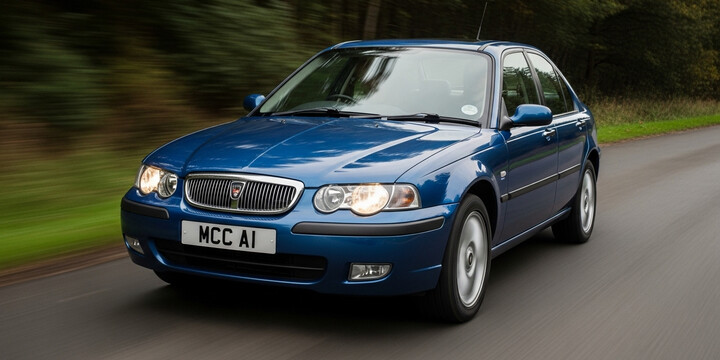
ROVER 45 (2000-05) 4DR SALOON 2.0 TD 101 CLUB SE
The ROVER 45 (2000-2005) 4DR Saloon 2.0 TD 101 CLUB SE is a well-regarded example of a compact saloon that offers a practical and reliable choice for a range of UK drivers. Positioned in the family car or commuter market, this model is known for its comfortable ride, spacious interior, and decent fuel economy. Its 2.0-liter turbo diesel engine delivers enough power for everyday driving while maintaining economical fuel consumption, making it a smart option for those seeking value in a used car. With an average mileage of around 144,800 miles and an estimated private sale value of approximately £580, the ROVER 45 2.0 TD is suitable for first-time drivers, small families, or anyone looking for a dependable vehicle that won’t break the bank.
What makes the ROVER 45 stand out in its segment are its classic design and reputation for comfort and durability. Compared to rivals, it’s often praised for its smooth handling and straightforward mechanics, which appeal to those seeking a car that’s easy to maintain. With an average of about six previous owners, it’s a model that has seen steady use across different drivers, highlighting its enduring appeal. Whether you’re a commuter or someone after a reliable runabout, the ROVER 45 (2000-05) 4DR Saloon 2.0 TD 101 CLUB SE remains a noteworthy choice in the used car market.

average use

Based on the latest mileage data for the Rover 45 (2000-05) 4DR Saloon 2.0 TD 101 Club SE, half of the vehicles have a recorded mileage between 0 and 10,000 miles, indicating some vehicles are relatively low mileage. Conversely, the other half are recorded between 140,000 and 150,000 miles, suggesting a significant portion of these vehicles have high mileage. This broad range highlights considerable variability in usage and condition within this model.

vehicle values

The data indicates that the private sale price for the ROVER 45 (2000-05) 4DR Saloon 2.0 TD 101 Club SE is consistently at £1,000 or less, representing 100% of the valuation range provided. This suggests that in the private sale market, these vehicles are typically valued at or below this amount, highlighting their relatively low market value. This could be reflective of the vehicle's age, condition, or market demand for this model.

production years

The data indicates that all surveyed vehicles of the Rover 45 (2000-05) 4DR Saloon 2.0 TD 101 Club SE model were manufactured in the year 2004. This suggests that, within this sample, 2004 is the sole year of manufacture represented, reflecting either a limited dataset or a concentration of vehicles from that particular year.

colour popularity

The data indicates that for the ROVER 45 (2000-05) 4DR Saloon 2.0 TD 101 Club SE, the vehicle body paint colors are evenly split between Silver and Grey, each accounting for 50% of the sample. This suggests that these two shades are equally popular choices among owners or are perhaps the most commonly available options for this model during that period. The balanced distribution highlights no clear preference for one color over the other within this dataset.

ownership cycle

The data indicates that for the 'ROVER 45 (2000-05) 4DR SALOON 2.0 TD 101 CLUB SE,' half of the registered vehicles (50%) have only five keepers, while the remaining 50% have ten keepers. This suggests a fairly even distribution in terms of vehicle turnover, with a notable portion of vehicles experiencing a relatively low number of owners, which could imply good ownership stability for some vehicles and higher ownership changes for others.

engine choices

Based on the available data for the Rover 45 (2000-05) 4DR Saloon 2.0 TD 101 Club SE, it appears that 100% of the vehicles within this model and engine type use diesel as their primary fuel. Additionally, the data indicates that the engine capacity is documented for 1994, but the specific size or variation in engine capacity is not detailed beyond that. This suggests a consistent use of diesel engines across the sample, highlighting fuel type uniformity for this model during its production years.












